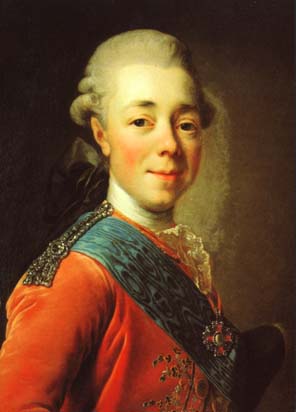
Paul I (1796-1801)

Paul I (born on September 20, 1754), the son of Peter III and Catherine the Great, became a new Russian Emperor after Catherine II died on November 6 1796. Having spent most of his life in Gatchina Palace, given to him by his mother, where he had his own court and a small army (Paul had a passion for military order), the new Emperor grew up an irritable and suspicious person, wishing all his orders to be immediately and strictly obeyed. And as soon as 42-year-old Paul declared himself Emperor, the stability of Catherine's reign vanished. For instance, Paul I started with introducing a new etiquette - every person approaching Emperor’s palace was to bare his head at great distance; gentlemen were to kneel at royal receptions and kiss Paul’s hand; all kind of hats except tricorne were taboo as well as frock-coats; wearing neckties and sideburns was banned. Paul I freed those imprisoned by the Privy Council, liberated the Poles, abolished conscription and limited the power of landowners over the serfs. On April 5, 1797, he issued a decree on rights of succession that established procedures for the transfer of power from one monarch to the next. In foreign policy, he performed an abrupt reversal, changing from war with France to union with it. All this made the Emperor very unpopular at court and many people had reasons to see Paul dethroned or assassinated. And on the night of March 12, 1801, when a battalion of Semyonovsky Regiment was guarding the castle, Paul was suffocated by conspirators drawn from high officials, favorites of Catherine and officers of the guard regiment. Heated with champagne, the conspirators went to the Mikhailovsky Castle, built to become a shelter for Paul. Paul lay dead ten minutes later. The Emperor was succeeded by Alexander I, who is remembered mostly for having been the ruler of Russia during the Napoleon invasion.
|
Copyright © 2004-2005 Palytra Travel
All rights reserved |
Website development |

